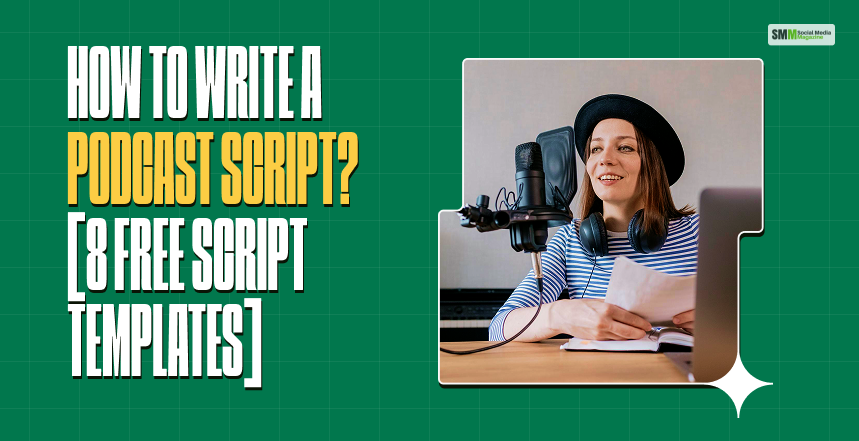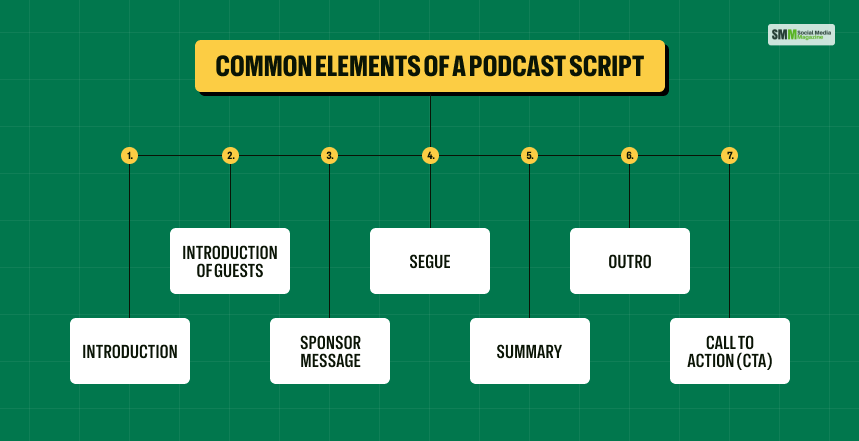What Are The Pros And Cons Of Living In A Cashless Society?
Arnab Dey, 19 hours ago

Podcasting has evolved from being a quirky hobby to the mainstream method of storytelling in media. Whether a true-crime show, an educational series, or even an interview-based show, there is one thing that remains constant: a good podcast script forms the backbone of any successful podcast episode.
Even if your podcast feels conversational or even entirely ad-libbed, great hosts are always well-prepared in advance. A good script keeps your thoughts organized, your delivery natural, and your message impactful.
We’ll also answer common questions like how to cite a podcast, what makes for a great podcast intro, and how to structure engaging podcast segment ideas in any show format.

A podcast script is a written document that will guide your recording session. Included in this, but not limited to, are an introductory number, talking points, guest questions, transitions, advertisements, and closing statements.
This script is not to make you sound like a robot, but actually to ensure that your delivery is smooth, the timing is well apportioned, and that the listeners stay engaged all the way through.
There isn’t one way to write a podcast script. Some podcasters prefer minimal outlines, while others write a word-for-word script in detail, especially when recording solo or producing narrative podcasts.

No matter what your format is, most podcasts share some common podcast segments. Here’s a breakdown of the key elements that you want to include in your script.
This is where your podcast sets the first impression, so it needs to be tight, energetic, and inviting. A good podcast intro must include:
Example:
Welcome to The Creative Edge, the podcast that explores art and the science of storytelling. I’m your host, Maya, and today we’re going to reveal how small habits can spark big creative breakthroughs!
Introduce your guest, if it is an interview or Q&A format, in the most enthusiastic yet credible manner possible. Provide some background information, notable achievements, and relevance to the topic at hand.
Example:
Today, we are joined by Dr. Lina Hayes, a neuroscientist and best-selling author, who shares her insights on creativity and brain health.
Of course, if you have sponsors, this is where you incorporate their message. Make sure it’s conversational and relevant to your audience.
This episode is brought to you by Riverside, the remote podcast recording tool that delivers studio-quality audio and video. Try it free at Riverside.fm.
A transition tacks between topics or sections, keeping your flow natural, rather than forcing it to jump abruptly.
Now that we have the mindset part behind us, let’s move on to some practical techniques for sparking creativity.
Repeat key takeaways before closing. This provides reinforcement to your key message and closure for listeners.
So, today we grasped three big lessons: the underestimated power of routine nurtures creativity, small steps outperform giant leaps, and rest cultivates innovation.
The podcast outro serves to thank the listeners and invite further engagement.
“Thanks for tuning in to The Creative Edge! If you enjoyed today’s episode, subscribe and leave us a review — it really helps more people discover the show.”
Call to action at the end: encourage listeners to follow on social media, to visit your website, to download a resource, or to share the episode.
“Head to our website to get the free creativity checklist, and sign up for our newsletter for tips each week!
Here’s a simple template you can use for most podcast formats:
| [Intro Music Fades In]Welcome to [Podcast Name], where [short description of the show]. I’m your host, [Host Name], and today we’ll talk about [topic].Segue to Segment 1Host: Okay, let’s get into [main idea or question].Guest Segment (if applicable)Host: Today with me is Guest’s Name. Brief bio. Welcome to the show!Guest: Thank you for having me!Ad Break or Sponsor MessageHost: And we’ll be right back after a quick message from our sponsor.Segment 2 – Deep Dive or DiscussionDiscussants: Host and GuestOverview and Key TakeawaysOutro: Thanks for tuning in! Don’t forget to subscribe and share with a friend.[Outro Music Fades Out} |
The classes in active label representation are a disjoint partition, meaning at least one class must be true, though only one can be true.
Also Check:

Each podcast is unique in its tone, cadence, and style. The following are eight of the most popular script approaches, along with examples.
Great for discussion or comedy formats. You don’t have to write out an entire script; you just write talking points.
Use the cues to prompt banter.
Example:
Applied to narrative podcasts, works of fiction, or storytelling. The script is completely written out, including sound effects and timing.
Ideal for education or motivational podcasts, the pace and direction are fully in your hands.
Includes prepared podcast questions and transitions. “Can you tell us about a moment that defined your career?
Based on questions from the audience or listener feedback. Great for community-driven shows.
Perfect for actionable, instructional episodes that include clear step-by-step breakdowns.
Too many guests/cohosts discuss the same subject. There should be clear cues regarding who speaks next to avoid overlapping or over-talking each other.
Writing a podcast script that sounds natural is an art, and it takes practice. Smooth the process by following these best practices:
If your podcast is about specific topics or targeting specific industries, identify trending keywords. That helps for SEO and hugely increases discoverability.
Apps like Otter.ai or Descript will be able to give you a transcription of your spoken ideas, and that’s great for capturing natural phrasing.
Just speak, as you would, without complicated sentences or confusing jargon.
Include cues like “[pause]”, “[laugh]”, or “[emphasize]” to help guide your tone and pacing.
Practice beforehand to catch awkward phrasing and to fine-tune transitions.
A strong podcast structure will keep your listeners engaged. The perfect episode includes:
Here are a few questions and queries that others have asked on the topic of podcast script that might be helpful for you as well.
That depends on your episode length. For a 30-minute show, you would need 3,000–3,500 words if fully scripted.
No, use it as a guide. Reading word-for-word can sound unnatural.
Ask open-ended questions that encourage storytelling; avoid yes/no questions.
Google Docs, Notion, and Descript are great for collaboration and note-taking.
Writing a great podcast script is an art and science combined. It helps you maintain a logical flow, build consistent branding, and connect emotionally with your listeners.
Whether you’re more about freestyle conversation or fully scripted narration, a well-thought-out structure will make all the difference. From creating an engaging podcast introduction to trying new podcast segment ideas, every element adds to the listener’s experience.
And remember, clarity, preparation, and authenticity mean so much more than perfection. So take hold of your mic, outline the next episode, and begin turning those ideas into an engaging audio journey.
Nabamita Sinha loves to write about lifestyle and pop-culture. In her free time, she loves to watch movies and TV series and experiment with food. Her favorite niche topics are fashion, lifestyle, travel, and gossip content. Her style of writing is creative and quirky.